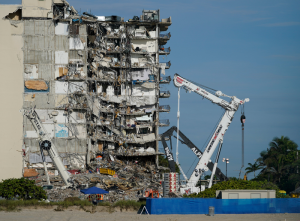How to Safely Demolish a Building

Demolition is an essential part of the construction industry, as it allows for the removal of outdated or unsafe structures to make way for new developments.
Ensuring the safety of everyone involved is crucial, and proper planning, techniques, and adherence to regulations are all necessary components of a successful demolition project.
This article will provide an overview of the methods of demolition of buildings, risk management, and other key aspects of the demolition process.
Reasons for Demolition of Buildings
There are various reasons for the demolition of buildings, such as structural instability, outdated designs, changes in land use, or making way for new developments. Each situation requires a unique approach, and the chosen demolition method will depend on the specific circumstances.
Methods of Demolition of Buildings
- Mechanical Demolition: This is the most common method, which involves using heavy machinery such as excavators, wrecking balls, and bulldozers to dismantle the structure. It is typically faster and more cost-effective than other methods.
- Implosion: This method involves the use of explosives to demolish a building. The explosives are strategically placed to cause the building to collapse in a controlled manner. This technique requires careful planning and execution and strict adherence to safety protocols.
- Deconstruction: This method involves the careful disassembly of a building, often intending to salvage or reuse materials. It is more time-consuming and labor-intensive than other methods, but it has the benefit of minimizing waste and environmental impact.
Demolition Techniques and Safe Work Procedure for Demolition
Various demolition techniques are used depending on the method chosen. In mechanical demolition, for example, different attachments can be used on excavators to break apart concrete or cut through steel. For implosion, the choice of explosives and their placement is crucial to ensure a controlled collapse.
A safe work procedure for demolition is essential to mitigate risks and protect workers. This includes proper planning, training, personal protective equipment (PPE) use, and adherence to safety guidelines and regulations.
The Demolition Plan
a. What is a Demolition Plan?
A demolition plan is a detailed document outlining a demolition project’s scope, methods, procedures, and safety measures. It is an essential part of the planning process and helps ensure that all aspects of the project are considered and addressed.
b. Building Demolition Plan Example
A building demolition plan may include information such as the project timeline, demolition methods, safety protocols, and waste disposal plans. It should also consider site access, proximity to other structures, and environmental considerations.
c. Demolition Process Flowchart
A flowchart can be useful for visualizing the various stages of the demolition process, from planning and permitting to the actual demolition work and site cleanup.
Demolition Rules and Regulations
Compliance with demolition rules and regulations is essential for ensuring safety and minimizing environmental impact. In Australia, the Australian standard for demolition (AS 2601-2001) provides guidelines and requirements for the safe demolition of structures. Similar regulations exist in other countries, and being familiar with and adhering to them throughout the demolition process is crucial.
The Demolition Risk Management Process
- Hazard Identification: The first step in managing risks is identifying potential hazards associated with the demolition project. This includes structural hazards, environmental hazards, and risks to workers or the public.
- Risk Assessment: Once hazards have been identified, a risk assessment should be conducted to evaluate the likelihood and severity of potential incidents.
- Risk Control: Based on the risk assessment, appropriate control measures should be implemented to minimize or eliminate risks. This may include modifying work processes, using protective equipment, or implementing safety training.
d. Monitoring and Review: Regular monitoring and review of the demolition project are essential to ensure that risk control measures remain effective and that any new hazards are identified and addressed promptly.
Reducing Risks During Demolition Work
To minimize hazards and ensure safety during demolition work, consider the following tips:
- Develop a comprehensive demolition plan, including a site-specific safety plan.
- Ensure workers are properly trained and equipped with appropriate PPE.
- Follow all relevant rules and regulations, including local, state, or national guidelines.
- Implement strict access control measures to prevent unauthorized personnel from entering the demolition site.
- Communicate regularly with all stakeholders, including workers, site managers, and neighbors, to ensure everyone is aware of the project’s progress and potential risks.
Hazards Associated with Demolition
Five common hazards associated with demolition projects include:
- Structural collapse: Unpredictable and uncontrolled collapses can occur without proper planning and techniques.
- Falling debris: During demolition, there is a risk of falling debris that can cause injury to workers or damage to adjacent properties.
- Dust and air pollution: Demolition work can generate significant amounts of dust and air pollutants, posing risks to workers and the environment.
- Noise pollution: Heavy machinery and explosives can create loud noises that can harm workers’ hearing and disturb nearby residents.
- Hazardous materials: Demolition sites may contain hazardous materials such as asbestos, lead, or other toxic substances that pose risks to workers and the environment if not handled properly.
Conclusion
The safe demolition of a building requires meticulous planning, adherence to regulations, and a thorough understanding of the potential risks involved. By following best practices and implementing effective risk management strategies, demolition projects can be carried out safely and efficiently, with minimal harm to workers, the public, and the environment.
